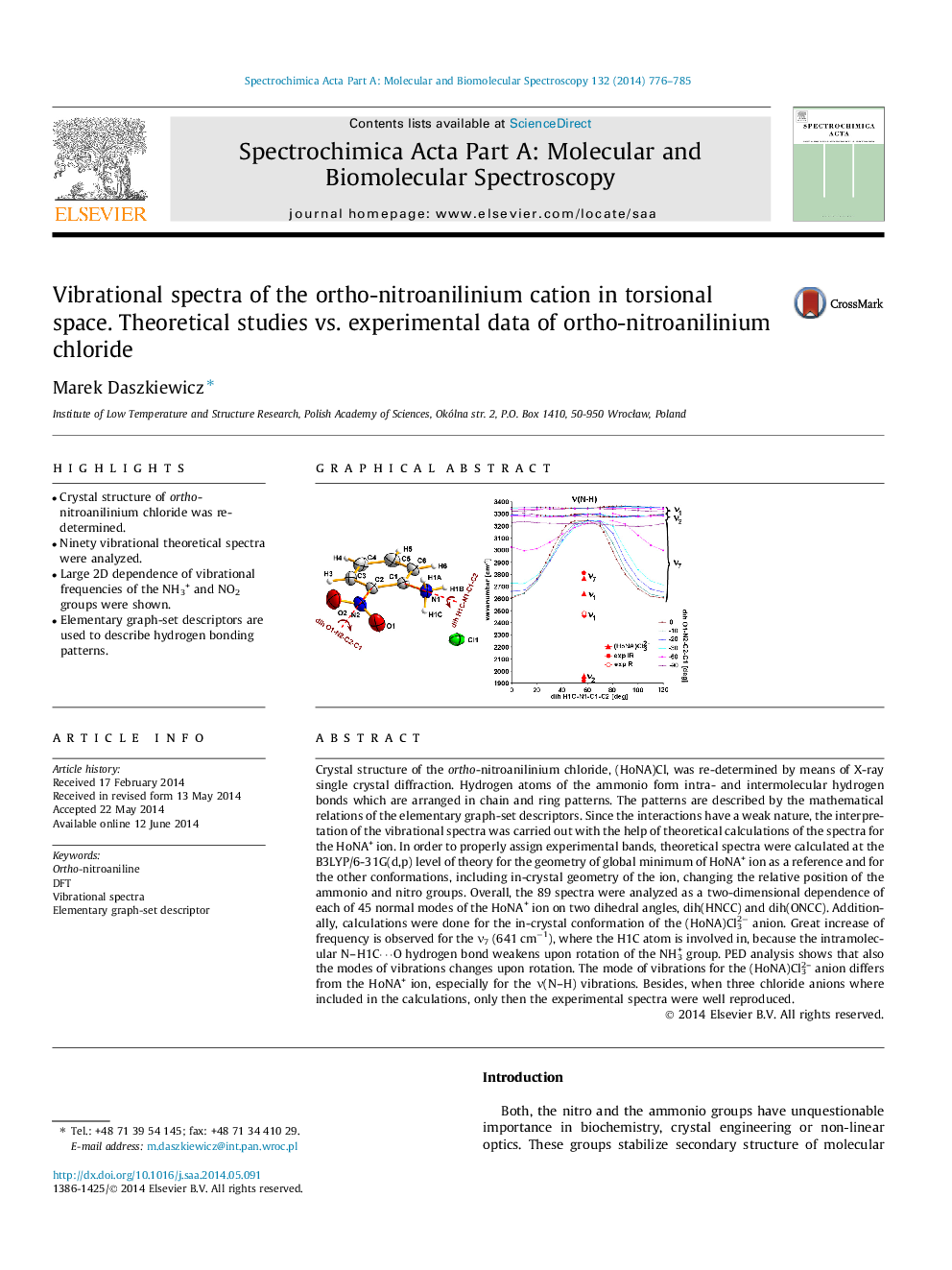| Article ID | Journal | Published Year | Pages | File Type |
|---|---|---|---|---|
| 1229645 | Spectrochimica Acta Part A: Molecular and Biomolecular Spectroscopy | 2014 | 10 Pages |
•Crystal structure of ortho-nitroanilinium chloride was re-determined.•Ninety vibrational theoretical spectra were analyzed.•Large 2D dependence of vibrational frequencies of the NH3+ and NO2 groups were shown.•Elementary graph-set descriptors are used to describe hydrogen bonding patterns.
Crystal structure of the ortho-nitroanilinium chloride, (HoNA)Cl, was re-determined by means of X-ray single crystal diffraction. Hydrogen atoms of the ammonio form intra- and intermolecular hydrogen bonds which are arranged in chain and ring patterns. The patterns are described by the mathematical relations of the elementary graph-set descriptors. Since the interactions have a weak nature, the interpretation of the vibrational spectra was carried out with the help of theoretical calculations of the spectra for the HoNA+ ion. In order to properly assign experimental bands, theoretical spectra were calculated at the B3LYP/6-31G(d,p) level of theory for the geometry of global minimum of HoNA+ ion as a reference and for the other conformations, including in-crystal geometry of the ion, changing the relative position of the ammonio and nitro groups. Overall, the 89 spectra were analyzed as a two-dimensional dependence of each of 45 normal modes of the HoNA+ ion on two dihedral angles, dih(HNCC) and dih(ONCC). Additionally, calculations were done for the in-crystal conformation of the (HoNA)Cl32− anion. Great increase of frequency is observed for the ν7 (641 cm−1), where the H1C atom is involved in, because the intramolecular N–H1C⋯O hydrogen bond weakens upon rotation of the NH3+ group. PED analysis shows that also the modes of vibrations changes upon rotation. The mode of vibrations for the (HoNA)Cl32– anion differs from the HoNA+ ion, especially for the ν(N–H) vibrations. Besides, when three chloride anions where included in the calculations, only then the experimental spectra were well reproduced.
Graphical abstractFigure optionsDownload full-size imageDownload as PowerPoint slide
